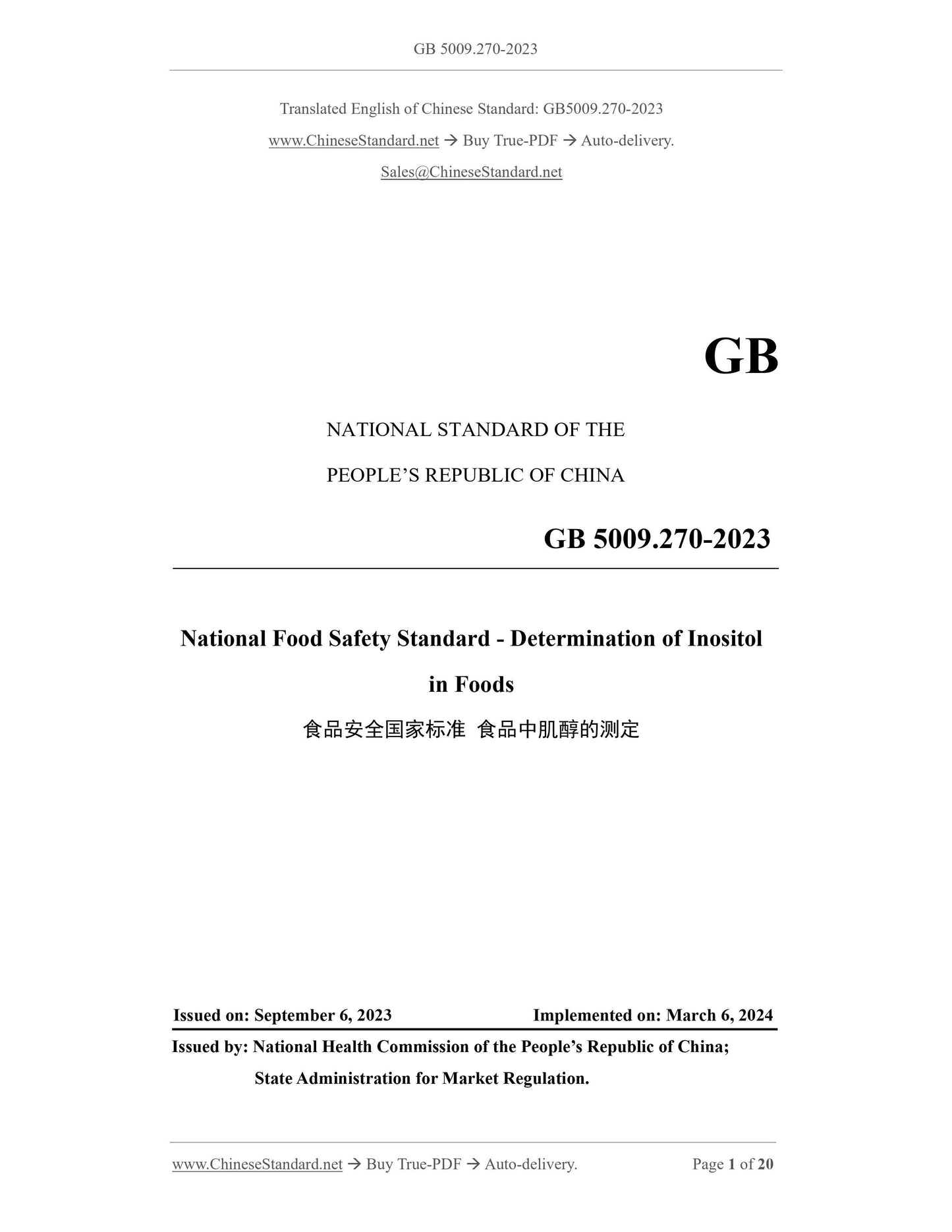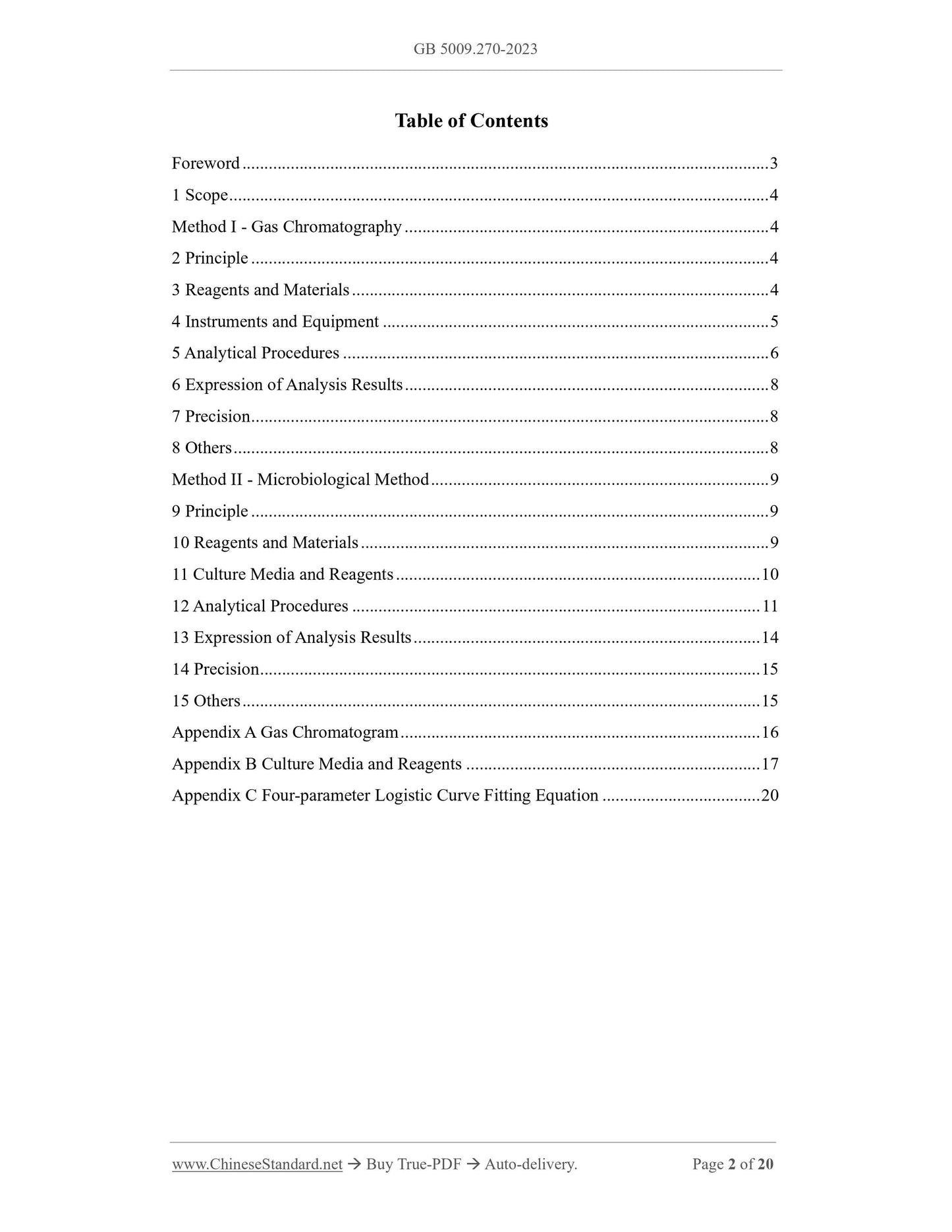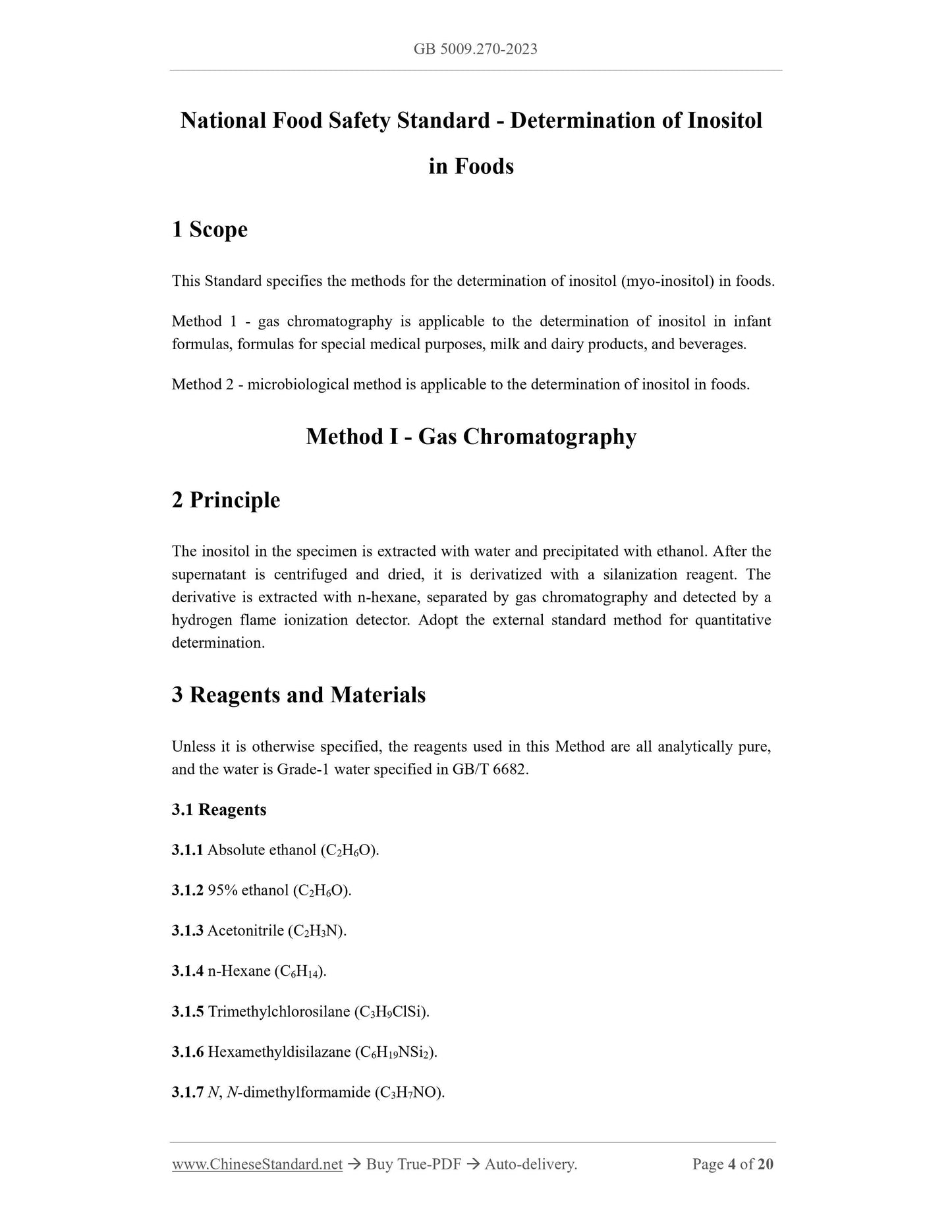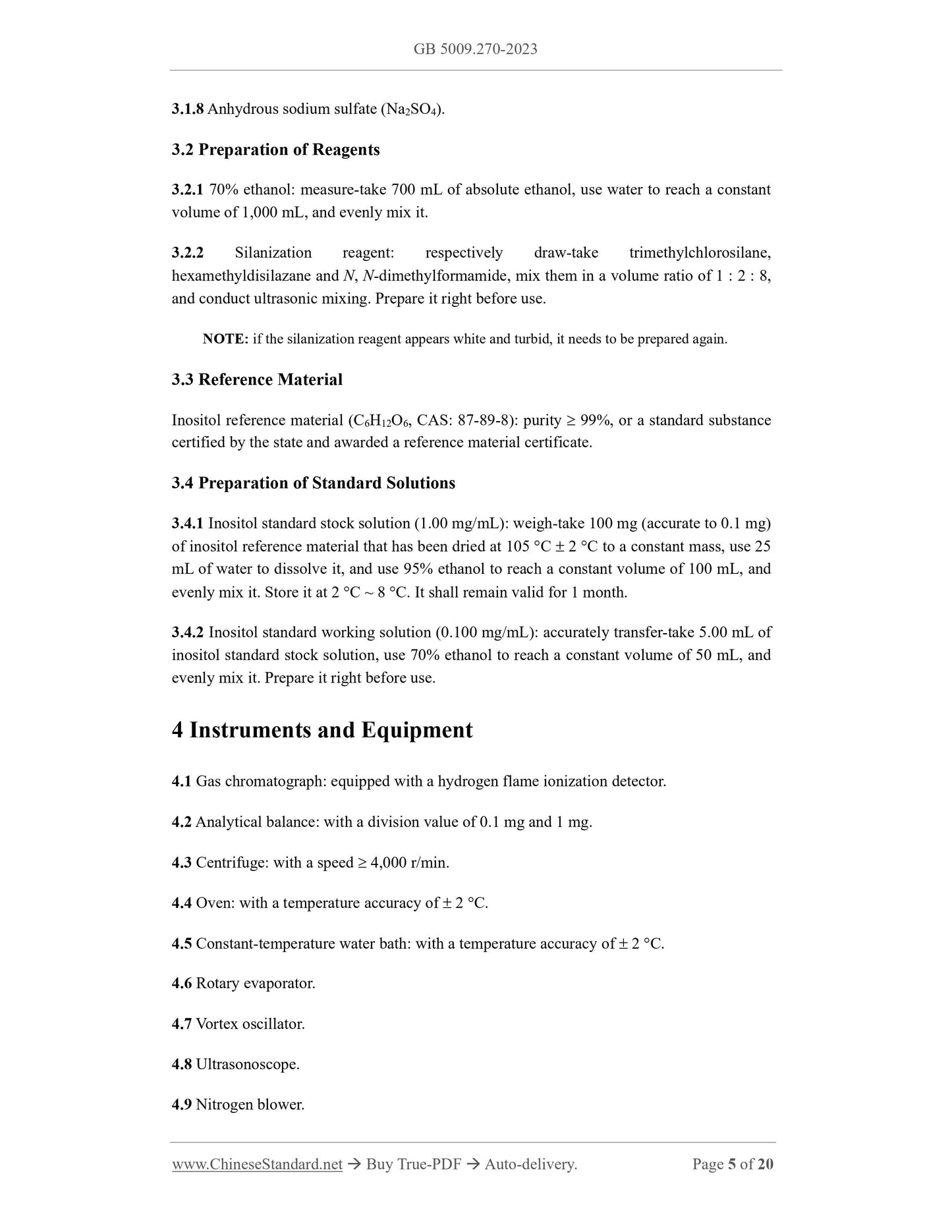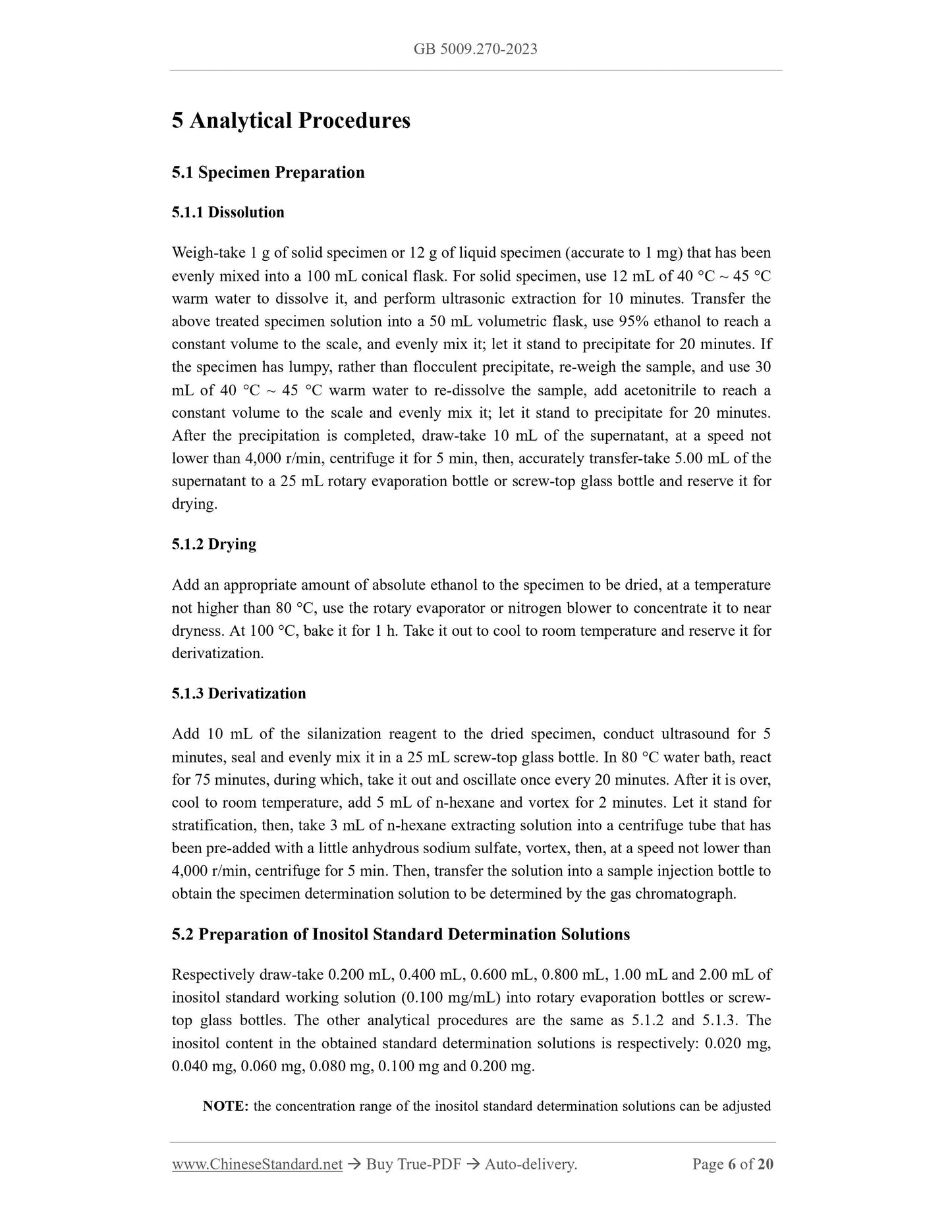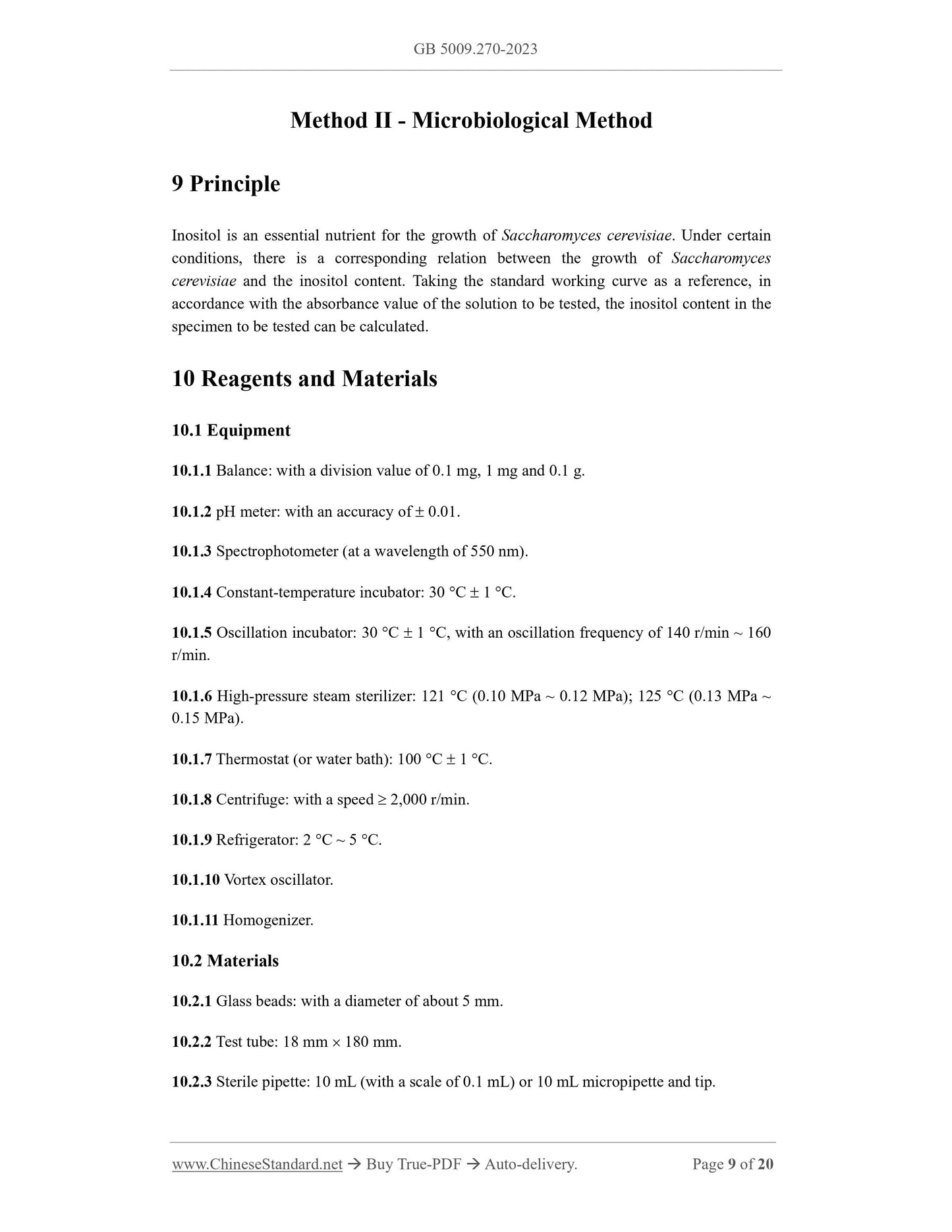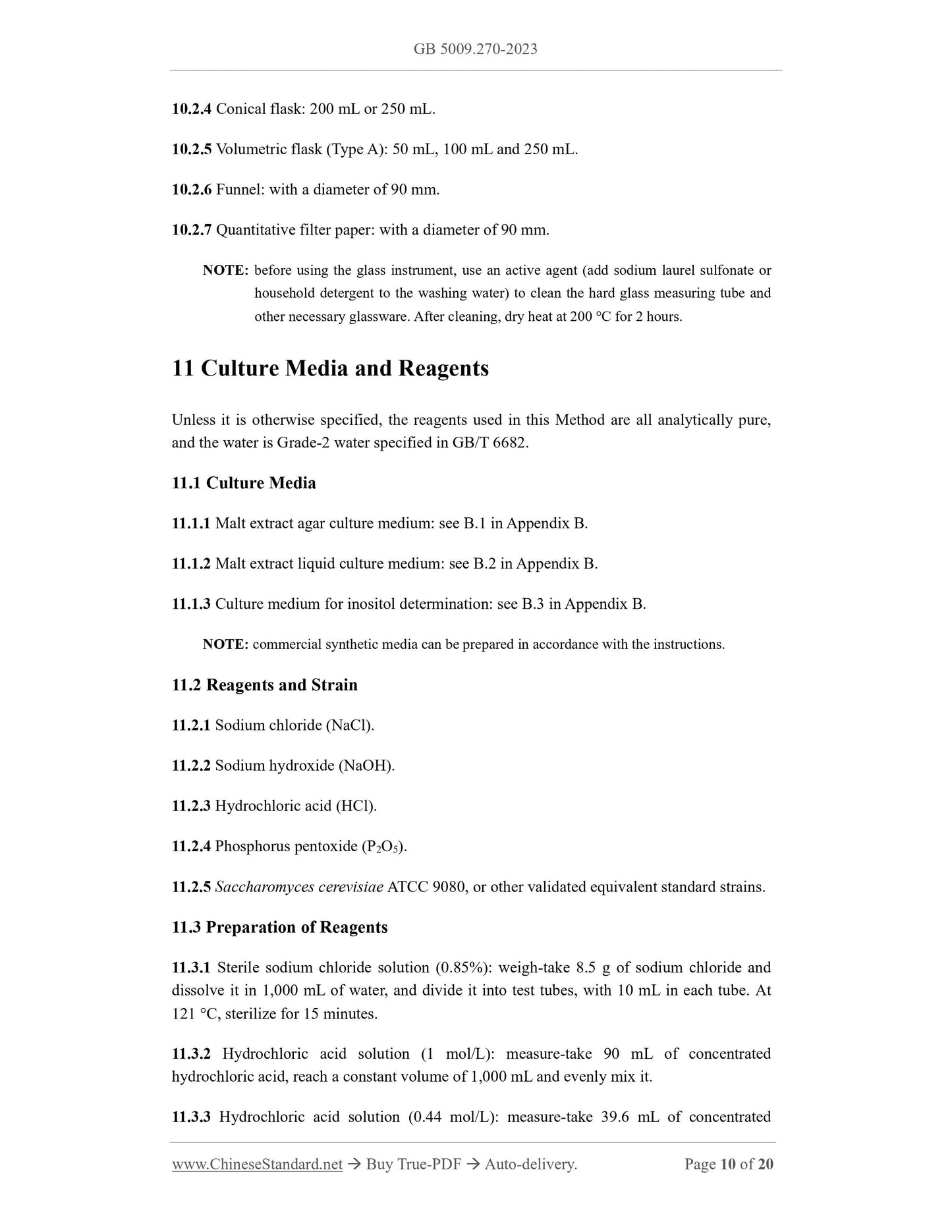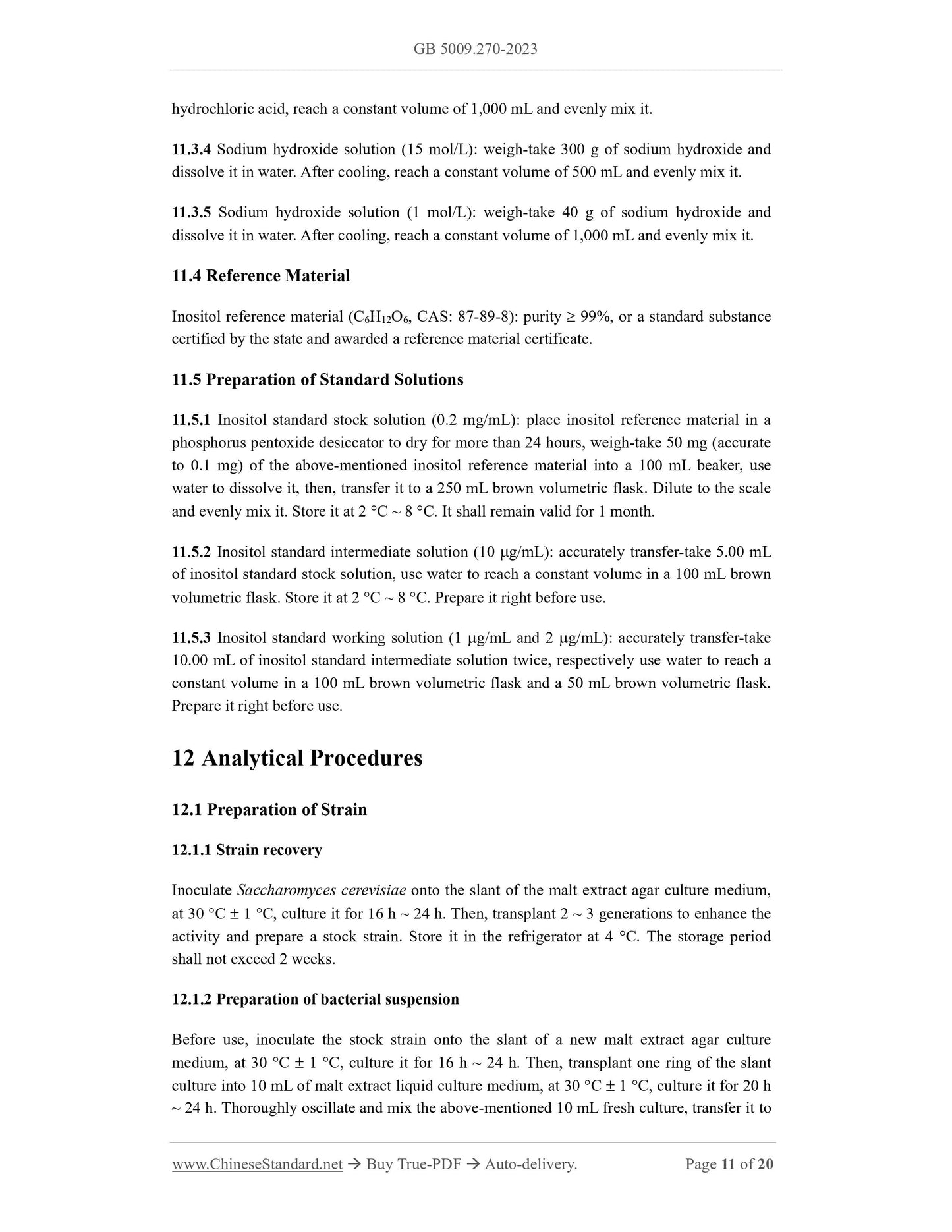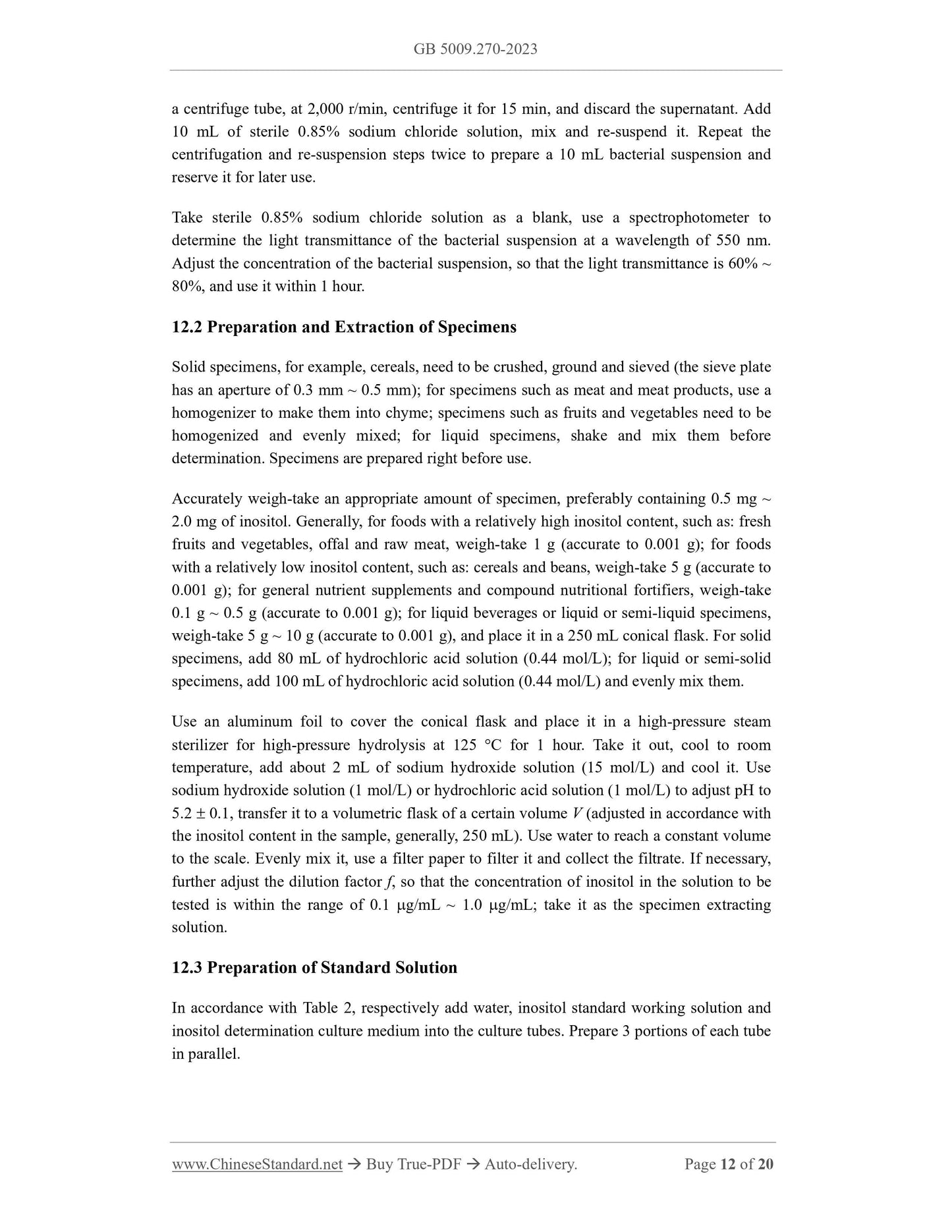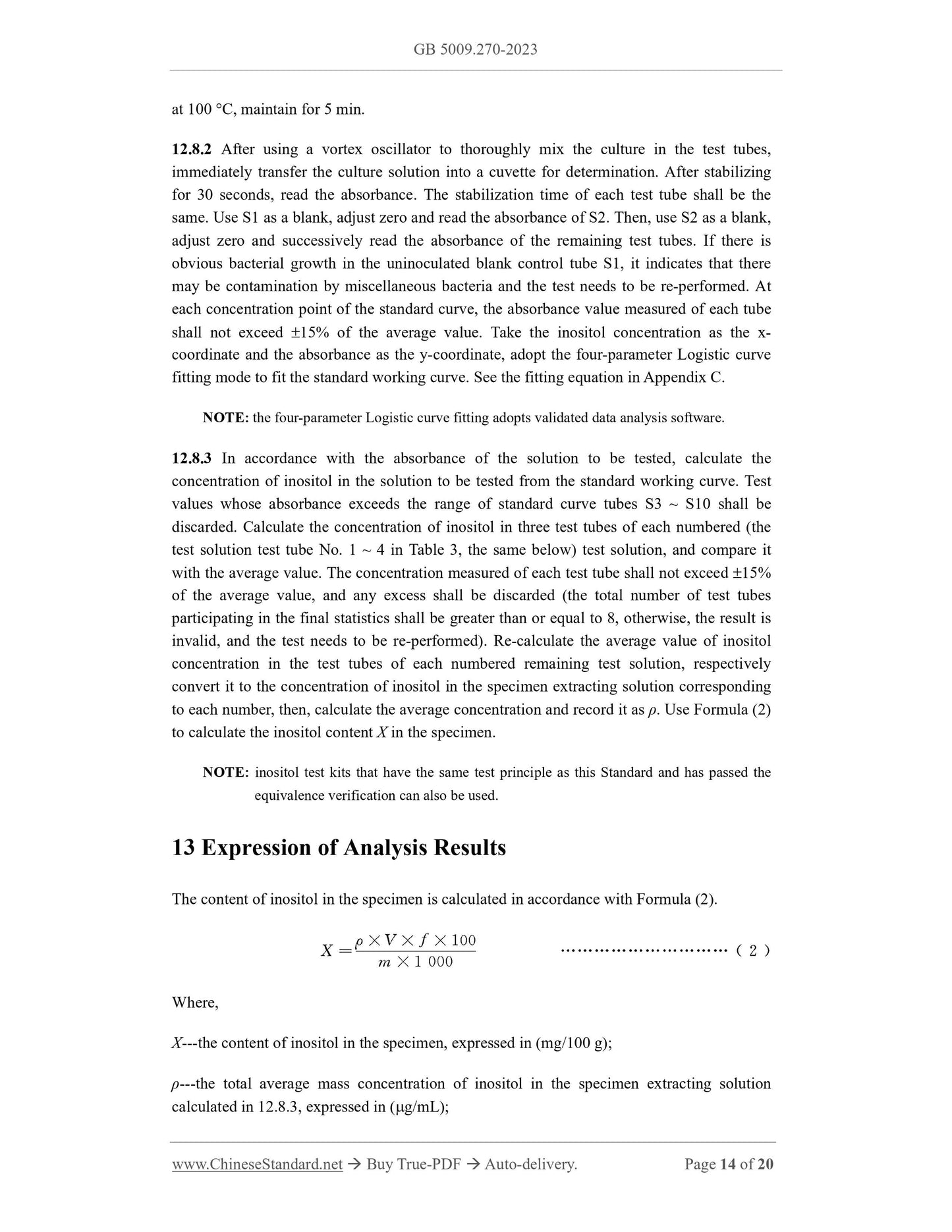1
/
of
10
www.ChineseStandard.us -- Field Test Asia Pte. Ltd.
GB 5009.270-2023 English PDF
GB 5009.270-2023 English PDF
Regular price
$260.00
Regular price
Sale price
$260.00
Unit price
/
per
Shipping calculated at checkout.
Couldn't load pickup availability
GB 5009.270-2023: National food safety standard - Determination of inositol in foods
Delivery: 9 seconds. Download (and Email) true-PDF + Invoice.Get Quotation: Click GB 5009.270-2023 (Self-service in 1-minute)
Newer / historical versions: GB 5009.270-2023
Preview True-PDF
Scope
This Standard specifies the methods for the determination of inositol (myo-inositol) in foods.Method 1 - gas chromatography is applicable to the determination of inositol in infant
formulas, formulas for special medical purposes, milk and dairy products, and beverages.
Method 2 - microbiological method is applicable to the determination of inositol in foods.
Method I - Gas Chromatography
Basic Data
| Standard ID | GB 5009.270-2023 (GB5009.270-2023) |
| Description (Translated English) | National food safety standard - Determination of chlorate and perchlorate in foods |
| Sector / Industry | National Standard |
| Classification of Chinese Standard | X09 |
| Word Count Estimation | 8,838 |
| Date of Issue | 2023-09-06 |
| Date of Implementation | 2024-03-06 |
| Issuing agency(ies) | National Health Commission of the People's Republic of China, State Administration for Market Regulation |
| Summary | This standard specifies the liquid chromatography-tandem mass spectrometry method for the determination of chlorate and perchlorate in foods. This standard applies to vegetables and their products, fruits and their products, cereals and their products, meat and meat products, aquatic products, eggs and egg products, milk and dairy products, condiments, beverages, infant formula foods and infant formula Determination of chlorate and perchlorate in supplementary foods and tea. |
Share
